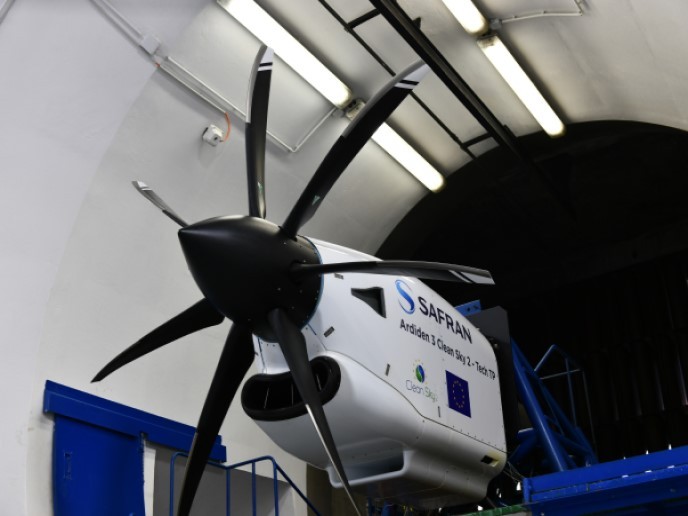European aviation SME tests will ensure greener, cheaper and quieter air travel in the future
The EU-funded ICTUS project ground tested an adapted gas turbine engine as part of the development of a new turboprop aircraft engine demonstrator. “This is the first demonstrator(opens in new window) delivered under the Clean Sky 2(opens in new window) research programme,” states project coordinator Romain Leneveu. Originally used in helicopters the Ardiden 3 Turboshaft engine(opens in new window) was re-equipped with a new seven-blade propeller and power gearbox, including air intake and nacelle, to transform into a turboprop for use in general aviation. VibraTec(opens in new window), an SME leader in vibration and mechanical analysis, designed, manufactured and tested the Tech turboprop (Tech TP) engine cradle to support the engine and the nacelle for ground testing. Researchers also created a detailed dynamic model to predict the static and the dynamic response of the system. “The low-mass design is in line with the low fuel emission of the demonstrator, while the optimisation of the transmission path allows for a reduction of structure-borne noise inside the cabin,” Leneveu explains.
Vibration reduced
Following manufacture, the cradle was fitted with strain gauges and subjected to representative radial and axial loads. Project partners monitored the engine loads under operational conditions and the reduction of the vibration path to optimise crew and passenger comfort. They employed a new kind of sensor based on the fibre Bragg grating(opens in new window) technologies, a family of optical fibre strain sensors that resist severe environmental conditions, especially against electromagnetic fields. The team also studied the engine airflow environment and measured the static and dynamic engine load envelope from the ground engine test. Testing the static engine involved performing a thermal analysis using computational fluid dynamics(opens in new window) to adjust the calibration process of the sensors, a minimal requirement to accurately monitor the Tech TP demonstrator. According to Leneveu: “An inverse method was set up in parallel to measure the operational loads of the Tech TP engine. Such indirect measurements allowed us to characterise the static and the dynamic forces transmitted by the engine at its mounting points.”
Fuel savings achieved
The proposed instrumentation combined with the development of advanced test methods provides a breakthrough in the exploitation of static engine testbed. It opens new ways to predict the engine interface within its aircraft environment for both engine and aircraft manufacturers and reduces the costs as there is no need for flight tests. This approach allows the static test bench to be exploited more fully and strengthens the competitiveness of the European aviation industry. “Delivery of the cradle opens a new phase for the Tech TP demonstrator, providing a step forward towards the next generation of propulsion,” Leneveu concludes. Clean Sky's Tech TP engine demonstrator project, therefore, paves the way for a 100 % European-built, sustainable, low-fuel and low-noise engine for use on general aviation and small commuter-sized aircraft (up to 19 passengers). Furthermore, fuel savings will cut costs for aircraft operators, helping boost European aviation's competitiveness.







